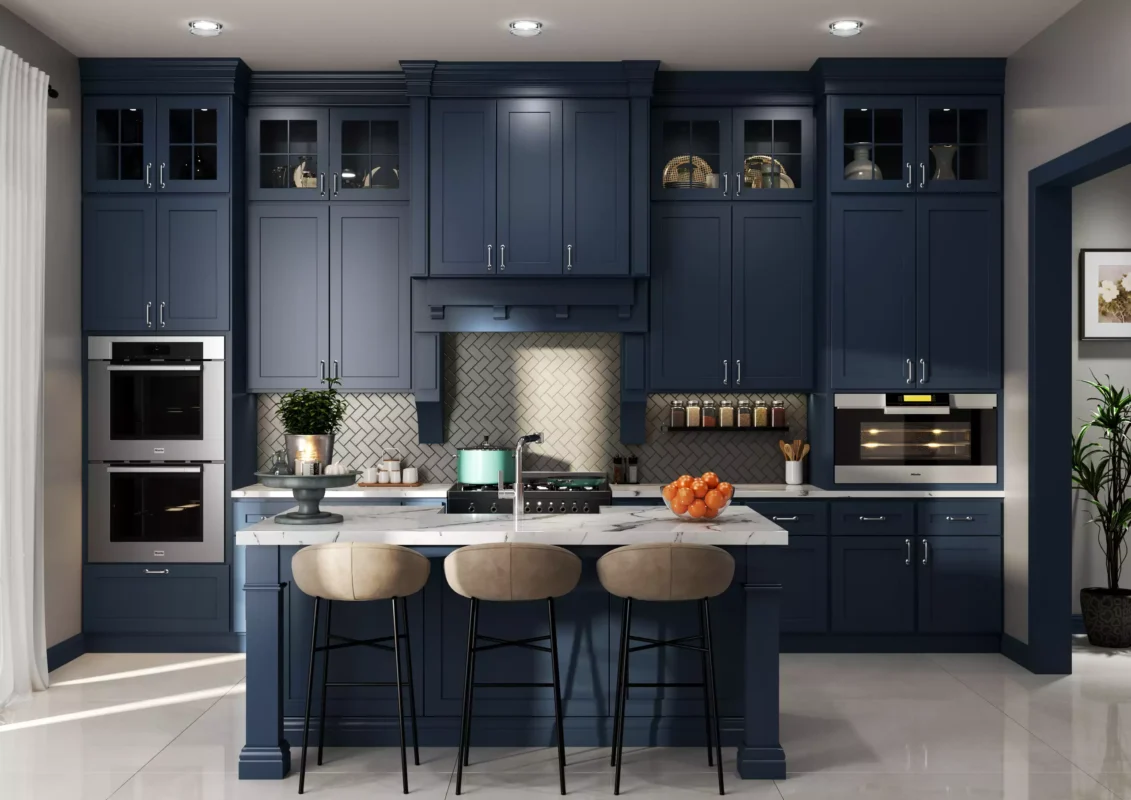Introduction — The New Era of Dining Rooms in 2025
1. Why Dining Rooms Are More Important Than Ever in 2025
The dining room has always held a special place in the heart of the home—a place to gather, share stories, and break bread. But as we enter 2025, its significance has skyrocketed beyond tradition. Today, dining rooms are multi-functional spaces blending social connection, work, entertainment, and wellness.
Post-pandemic lifestyle shifts accelerated the desire for homes to be versatile, comfortable, and smart. With hybrid work becoming a norm and socializing reimagined, dining rooms are transforming into hubs of creativity and bonding.
More than ever, people are investing in these spaces to reflect their values, tastes, and tech-savvy lifestyles. The dining room is no longer just where you eat—it’s where memories are made, ideas are shared, and wellbeing is nurtured.
2. The Shift from Functionality to Experience
Gone are the days when a dining room’s sole purpose was serving meals. In 2025, design is driven by experience. Every element—from furniture to lighting to sound—works harmoniously to create an inviting atmosphere that stirs the senses.
Dining rooms now cater to diverse needs:
-
Casual family breakfasts
-
Formal dinner parties
-
Remote work or study zones
-
Creative workshops or hobby areas
This experiential approach demands attention to detail, seamless integration of technology, and an emphasis on comfort and aesthetics. The focus has shifted from “just functional” to “emotionally engaging and welcoming.”
3. Blending Technology and Design: A New Standard
The line between a traditional dining room and a smart living space is fading fast. In 2025, the most stylish dining rooms are also the smartest. Imagine tables with wireless charging, adjustable lighting controlled by voice, and window treatments that respond to your schedule.
Smart devices no longer clash with décor; they enhance it. Minimalist tech hides in plain sight, amplifying comfort and convenience without compromising style.
This synergy of design and technology represents the future—a space where innovation meets timeless elegance.

romantic-couple-cooking-salad-in-the-kitchen
4. Sustainability’s Role in Modern Dining Spaces
Sustainability is no longer optional; it’s expected. Modern homeowners prioritize eco-friendly materials, energy efficiency, and ethical sourcing when designing dining rooms.
From reclaimed wood tables to low-VOC paints and organic textiles, every choice reflects a commitment to reducing environmental impact.
This eco-conscious approach also drives innovations like energy-saving smart lighting and air-purifying plants integrated into décor. A dining room in 2025 is as much about caring for the planet as it is about welcoming loved ones.
5. How Dining Rooms Reflect Lifestyle & Personality
Your dining room tells your story. Whether you gravitate toward sleek Scandinavian minimalism or cozy rustic charm, the space mirrors your lifestyle and values.
It’s the one room where style meets soul. Every color, texture, and piece of furniture sends a message about who you are and what you cherish.
In 2025, personalization is king. From customizable furniture to tailored lighting scenes, dining rooms are designed for authenticity and comfort.
6. Common Misconceptions About Dining Room Design Today
Despite these exciting advances, some myths linger:
-
Dining rooms are only for formal occasions. — In reality, they’re dynamic spaces for everyday life.
-
Smart technology is complicated and obtrusive. — Today’s tech is sleek, intuitive, and blends invisibly.
-
Sustainability means sacrificing style or comfort. — Modern eco-friendly designs prove otherwise.
-
Dining rooms must be large to be functional and stylish. — Even small spaces can be smart and stunning with clever design.
Understanding these misconceptions empowers homeowners to embrace the full potential of their dining spaces.
7. What to Expect in This Guide
This comprehensive guide will unlock everything you need to design a dining room that truly welcomes and wows in 2025. We will dive deep into:
-
Smart tech essentials that enhance convenience
-
Stylish design trends shaping modern aesthetics
-
Sustainable materials and eco-conscious choices
-
Lighting techniques to create perfect ambiance
-
Furniture selection balancing comfort and sophistication
-
Personalizing your space with décor and accessories
Throughout this journey, you’ll find practical tips, expert insights, detailed tables comparing options, and FAQs to address common questions.
By the end, you’ll be fully equipped to create a dining room that is not only beautiful and functional but also a genuine reflection of your lifestyle and values.

lesbian lovers working in kitchen
Summary & Key Takeaways
-
Dining rooms have evolved into multi-purpose, experience-driven spaces essential in 2025.
-
Smart technology now enhances design without sacrificing style.
-
Sustainability guides modern material and product choices.
-
Personalization and comfort are central to contemporary dining rooms.
-
Common myths about dining rooms are debunked, empowering new design approaches.
-
This guide will serve as your trusted roadmap to a stunning, smart, and sustainable dining space.
Suggested Table:
| Aspect | 2020 Dining Room Focus | 2025 Dining Room Focus |
|---|---|---|
| Primary Use | Meal service | Multifunctional (meals, work, socializing) |
| Technology | Minimal or none | Integrated smart tech (lighting, tables) |
| Materials | Conventional | Sustainable, recycled, eco-friendly |
| Design Approach | Functionality | Experience-driven, emotional engagement |
| Size & Layout | Larger formal rooms | Flexible, adaptable spaces |
| Ambiance | Basic lighting | Layered, customizable, mood-centric |
| Personalization | Limited | Highly customizable and personal |
Embracing Smart Technology for Effortless Dining
1. The Rise of Smart Dining Rooms: Why Technology Matters
In 2025, technology has become an indispensable part of modern living, and the dining room is no exception. Smart dining rooms seamlessly blend technology with comfort and style to enhance everyday experiences. From lighting to furniture, technology makes dining effortless, interactive, and more enjoyable.
Homeowners seek dining spaces that adapt to their lifestyle—automatically adjusting lighting, controlling music, or even keeping food warm. Smart tech creates a dynamic environment that anticipates needs and fosters connection.
2. Smart Lighting: Setting the Perfect Mood at Your Command
Lighting is the soul of ambiance. Smart lighting systems now offer infinite customization, from color temperature to brightness, all controllable via apps or voice commands.
Key Features:
-
Scene Modes: Pre-set lighting scenes for breakfast, dinner parties, or romantic evenings.
-
Circadian Rhythm Lighting: Lights that adjust color temperature through the day to support natural body rhythms.
-
Voice Activation: Control lighting hands-free through Alexa, Google Assistant, or Siri.
-
Energy Efficiency: LED smart bulbs consume less energy and last longer.
Example:
Imagine welcoming guests with warm amber lighting, then switching to a bright, cool white for a lively brunch, all with a simple voice command.
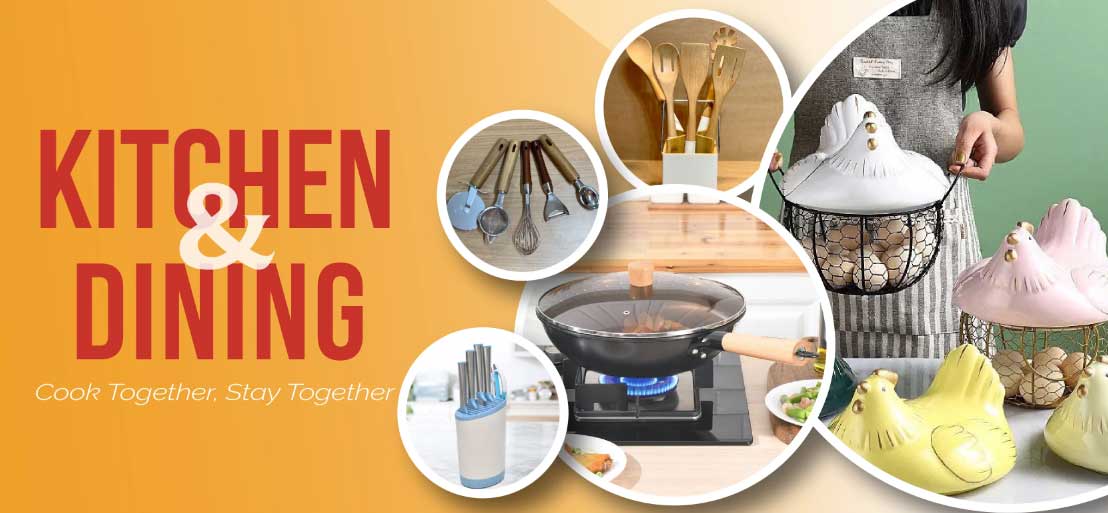
Mastering Kitchen Design: Space, Style, and Smart Appliances for Your Home
3. Automated Window Treatments: Convenience Meets Style
Natural light enhances any dining experience, but controlling it can be tricky. Motorized blinds and curtains, connected to smart home hubs, adjust automatically based on time, weather, or user preference.
Benefits:
-
Protect furniture from harsh sunlight
-
Maintain privacy effortlessly
-
Conserve energy by regulating indoor temperature
Smart window treatments are sleek, silent, and integrate flawlessly with other smart devices for a cohesive ecosystem.
4. The Smart Dining Table: Where Innovation Meets Tradition
A dining table has always been the heart of the room. Today, it’s evolving into a multifunctional smart hub.
Innovative Features Include:
-
Wireless Charging Pads: Keep your devices powered without clutter.
-
Touch Controls: Adjust lighting, music, or even access recipes directly from the table surface.
-
Heating Elements: Built-in warming zones keep dishes at the perfect temperature.
-
Integrated Speakers: Subtle sound systems enhance ambiance without extra devices.
These tables combine craftsmanship with cutting-edge tech to elevate the dining experience.
5. Voice-Controlled Entertainment and Ambiance
Smart speakers and sound systems controlled by voice allow hosts to curate playlists, adjust volume, or access information effortlessly.
How it enhances dining:
-
Background music tailored to occasion
-
Ambient soundscapes for a relaxing vibe
-
Interactive assistant for recipe guidance or trivia games
This hands-free interaction ensures your focus remains on your guests and the moment.
6. Smart Climate and Air Quality Control: Comfort You Can Feel
The dining room environment plays a critical role in guest comfort. Smart thermostats and air purifiers monitor and adjust temperature, humidity, and air quality.
Advantages:
-
Optimal temperature settings based on occupancy
-
Reduction of allergens and odors
-
Energy savings through intelligent regulation
Maintaining fresh, comfortable air improves the overall dining experience and health.
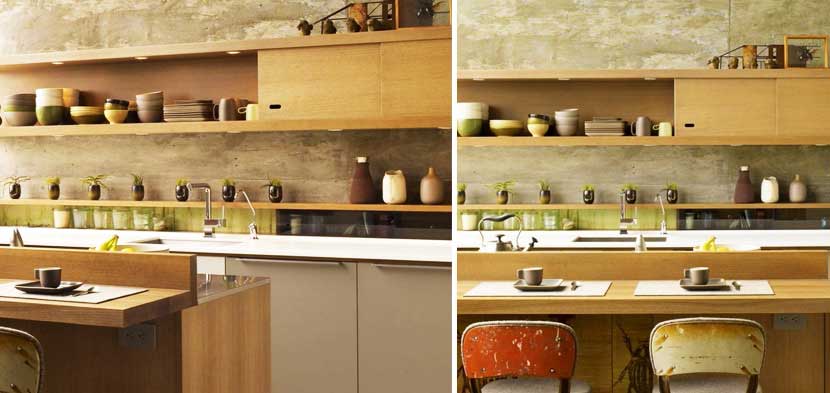
no-cabinet-handles-and-sliding-screens-in-japanese-kitchen-design
7. Security and Safety: Protecting Your Dining Space
Advanced sensors can detect spills, sudden temperature changes (like a forgotten stove burner), or unauthorized movement, sending alerts to your smartphone.
Smart safety features:
-
Leak detection near sinks or dishwashers
-
Motion sensors for after-hours alerts
-
Automated lighting for safe navigation at night
These features safeguard your investment and peace of mind.
8. Integrating Smart Tech with Interior Design
One challenge is blending tech with décor without overwhelming aesthetics.
Best practices:
-
Choose devices with minimalist designs and neutral colors.
-
Conceal wiring and hubs within cabinetry or behind furniture.
-
Use smart devices that can be controlled remotely and discretely.
-
Balance tech with natural materials to keep warmth.
When done right, technology feels like an invisible assistant enhancing your dining room rather than dominating it.
9. Practical Tips for Implementing Smart Tech
-
Start with lighting and climate control—these have the highest impact.
-
Choose interoperable devices compatible with your existing smart home system.
-
Consider professional installation for complex setups.
-
Prioritize ease of use to avoid tech frustration.
-
Regularly update device software to maintain security and performance.
10. Case Study: A Modern Smart Dining Room in Action
Consider the home of Lisa and David, a couple who remodeled their dining room with smart tech in 2024:
-
They installed Philips Hue smart bulbs with preset scenes for various meals.
-
Motorized blackout curtains adjust automatically to sunset times.
-
Their dining table features wireless charging and warming zones.
-
A smart speaker system plays tailored playlists controlled by voice.
-
Smart thermostat ensures comfort without manual adjustment.
-
Leak sensors alert them instantly to potential water damage.
Their guests often comment on the perfect ambiance and seamless convenience, making their dining room a favorite gathering spot.

Kitchen Lighting Trends and Solutions in 2025”
Table: Smart Dining Room Devices — Features and Price Comparison
| Device Type | Popular Model | Key Features | Price Range (USD) | Energy Efficiency | Compatibility |
|---|---|---|---|---|---|
| Smart Bulbs | Philips Hue | Color/temp control, voice, app | $40-$60 per bulb | High | Alexa, Google, Apple |
| Motorized Curtains | Soma Smart Shades | App control, schedules, battery | $200-$300 | Moderate | Alexa, Google |
| Smart Tables | Sobro Smart Coffee Table | Wireless charging, warming pad | $1,000-$1,500 | Varies | N/A |
| Smart Speakers | Amazon Echo Studio | Voice control, 3D sound | $200 | Low | Alexa |
| Smart Thermostat | Nest Learning Thermostat | Auto-adjust, occupancy sensors | $250-$300 | Very High | Alexa, Google |
| Leak Sensors | Fibaro Flood Sensor | Water detection, alerts | $50-$70 | Low | Zigbee, Z-Wave |
Top Design Trends Shaping Dining Rooms in 2025
1. The Shift to Multifunctional Dining Spaces
The modern dining room is no longer just for meals. In 2025, the trend leans heavily toward multifunctional use—spaces that serve as dining, workspace, and social hub all in one.
Why multifunctional?
-
Remote work and study remain prevalent, demanding adaptable spaces.
-
Smaller homes require efficient use of space.
-
Social gatherings evolve beyond traditional dinners, including game nights, crafting, or casual meetings.
Design Tips:
-
Choose extendable tables that adjust to different activities.
-
Incorporate storage solutions for work or leisure materials.
-
Select chairs that balance comfort for long hours with elegance.
2. Sustainable Materials Take Center Stage
Eco-conscious choices are top priority. Dining rooms are now showcases of sustainable design, balancing aesthetics with environmental responsibility.
Popular Sustainable Materials:
-
Reclaimed wood: Adds character and reduces waste.
-
Bamboo: Fast-growing, durable, and stylish.
-
Recycled metals and glass: For decorative accents and lighting fixtures.
-
Natural fibers: Organic cotton, hemp, and jute for upholstery and rugs.
Impact:
-
Supports green initiatives and reduces carbon footprint.
-
Creates a warm, earthy atmosphere.
-
Often more durable and unique than mass-produced alternatives.
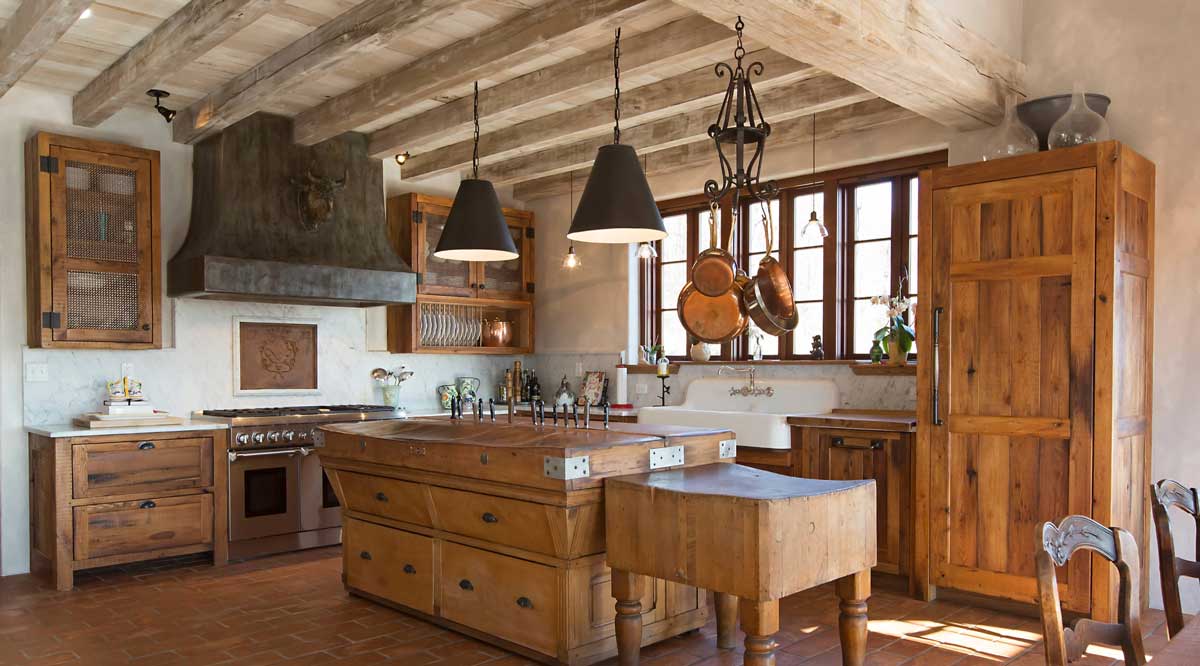
Mastering Kitchen Design: Space, Style, and Smart Appliances for Your Home
3. Biophilic Design: Bringing Nature Indoors
2025 dining rooms integrate plants, natural textures, and sunlight to foster wellness and connection to nature.
Key Elements:
-
Indoor vertical gardens or wall-mounted planters.
-
Large windows or skylights maximizing natural light.
-
Earth-tone color palettes inspired by soil, water, and foliage.
-
Natural stone or wood surfaces.
Studies show biophilic design improves mood, reduces stress, and enhances creativity—ideal for dining and socializing.
4. Statement Lighting as Functional Art
Lighting in 2025 transcends function to become a centerpiece and conversation starter.
Trending Styles:
-
Oversized pendant lamps with sculptural shapes.
-
Mixed-material chandeliers combining metal, wood, and glass.
-
LED strips subtly highlighting architectural features.
-
Dimmable and color-tunable options for flexible ambiance.
Tip: Position lighting to complement table shape and room size. A bold fixture above the table anchors the space and adds personality.
5. Curved Furniture and Softer Lines
Gone are the rigid, boxy dining chairs and tables. Curves dominate the scene, creating inviting and comfortable environments.
Why curves?
-
They promote flow and movement in the room.
-
Soften harsh architectural angles.
-
Evoke a sense of warmth and approachability.
Examples: Rounded dining tables, curved-back chairs with plush upholstery, and arched doorways or niches.
6. Warm, Muted Color Palettes
The vibrant, saturated colors of past years are giving way to warm, muted tones in dining rooms.
Popular Colors:
-
Terracotta, burnt sienna, and clay hues.
-
Soft sage greens and dusty blues.
-
Warm greys and creamy whites.
These colors create a cozy, timeless backdrop that complements natural materials and smart tech aesthetics.

sexy-happy-woman-big-beautiful-smile-cooking-domestic-kitchen-italian-housewife-doing-homemade-pasta-break-168800566
7. Mixed Textures for Depth and Interest
Combining textures adds depth and tactile interest without clutter.
Examples:
-
Velvet cushions paired with raw linen table runners.
-
Matte ceramic dishware against polished wood surfaces.
-
Rough-hewn wooden beams combined with sleek metal fixtures.
Mixing matte, glossy, soft, and hard textures creates a rich sensory experience that enhances the dining mood.
8. Minimalist Storage Solutions
Clutter-free spaces are essential for modern lifestyles. 2025 design embraces minimalist storage that hides necessities while preserving elegance.
Solutions Include:
-
Built-in cabinetry with clean lines.
-
Floating shelves with curated displays.
-
Hidden drawers within tables or benches.
-
Modular units that adapt to changing needs.
Storage keeps the space functional without compromising style or openness.
9. Incorporating Vintage and Artisan Pieces
Unique vintage or handcrafted items add soul and history to the dining room.
Why vintage and artisan?
-
Adds character and story.
-
Supports local artisans and sustainable shopping.
-
Breaks uniformity with one-of-a-kind accents.
Think handmade ceramics, restored mid-century chairs, or antique serving trays blending with contemporary elements.
10. Personalized Art and Décor
Art in dining rooms is shifting from generic prints to deeply personal pieces that reflect the homeowner’s taste and values.
Examples:
-
Commissioned paintings or sculptures.
-
Family heirlooms displayed thoughtfully.
-
Custom wallpaper or murals telling a story.
Personalized décor makes the dining room a memorable, welcoming environment for all occasions.
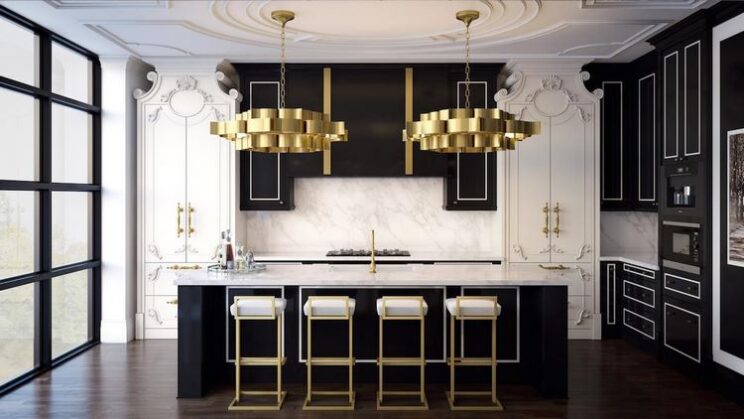
Kitchen Appliances in 2025: A Smart Guide to Modern Cooking Technology
Table: Comparison of Popular Dining Room Materials in 2025
| Material | Sustainability | Durability | Style Flexibility | Maintenance | Cost Range (USD) |
|---|---|---|---|---|---|
| Reclaimed Wood | High | High | Rustic to Modern | Moderate | $200–$800 |
| Bamboo | Very High | Moderate | Asian to Contemporary | Low | $100–$500 |
| Marble | Low | High | Luxurious, Classic | High | $500–$2000 |
| Metal (Steel/Iron) | Moderate | Very High | Industrial, Modern | Low | $150–$1000 |
| Glass | Moderate | Moderate | Sleek, Minimalist | Moderate | $100–$700 |
| Velvet Upholstery | Low | Moderate | Elegant, Plush | High | $150–$600 |
Choosing the Perfect Furniture & Optimizing Layout for Your 2025 Dining Room
1. Understanding Your Space: Measuring & Planning
Before buying any furniture, measuring your dining area is paramount.
-
Measure Twice, Buy Once:
-
Measure length, width, and ceiling height.
-
Account for traffic flow: at least 36 inches clearance around the table for chairs to move freely.
-
-
Consider Adjacent Spaces:
-
Will your dining room open into the kitchen or living area?
-
Think about how furniture placement affects flow between these zones.
-
-
Use Scaled Floor Plans:
-
Sketch or use apps like SketchUp or Roomstyler to test furniture arrangement virtually.
-
2. Dining Tables: The Heart of the Room
Choosing the right table sets the tone for your dining space.
Types of Dining Tables Trending in 2025
| Table Shape | Best For | Style Impact | Space Efficiency |
|---|---|---|---|
| Rectangular | Large families, formal meals | Classic and versatile | Fits well in narrow rooms |
| Round | Intimate gatherings | Encourages conversation, softer | Good for small or square rooms |
| Oval | Blend of round & rectangular | Elegant, smooth flow | Flexible seating |
| Square | Modern, minimalist spaces | Balanced symmetry | Best for square rooms |
| Extendable | Versatile, multi-use | Adaptable for guest count | Maximizes space efficiency |
Materials: Solid wood, reclaimed wood, engineered wood, glass tops with metal bases, and stone slabs are popular choices.
3. Chairs: Comfort Meets Style
Chairs need to balance aesthetics, comfort, and durability.
-
Ergonomics:
-
Proper seat height (18-20 inches from floor).
-
Backrest supports natural spine curve.
-
Cushioned seats or molded wood for comfort.
-
-
Materials & Finishes:
-
Upholstered with eco-friendly fabrics or leather alternatives.
-
Wooden frames, metal bases, or mixed materials.
-
-
Styles in 2025:
-
Curved backs for softness and elegance.
-
Minimalist frames with bold upholstery colors.
-
Mix-and-match chairs for an eclectic, personalized vibe.
-
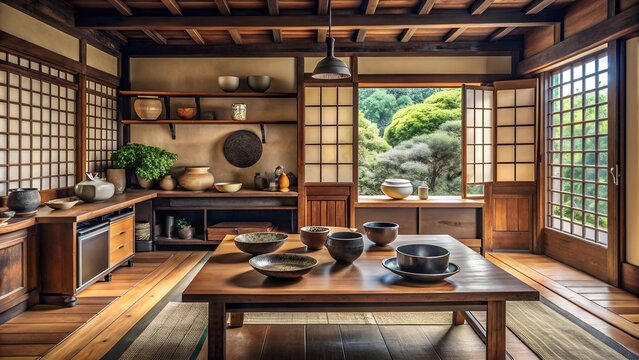
50 Kitchen Tools and Equipment and Their Uses
4. Buffets, Sideboards & Storage Furniture
These pieces combine function and beauty—essential for organizing dining essentials.
-
Functions:
-
Store dinnerware, linens, and serving utensils.
-
Display decorative items like candles, plants, or art.
-
-
Design Tips:
-
Choose built-ins or freestanding units that complement your table and chairs.
-
Consider furniture with hidden compartments or modular units for flexibility.
-
Use mirrored or glass-front cabinets to reflect light and enlarge space visually.
-
5. Lighting Fixtures: Positioning and Functionality
Lighting is key for atmosphere and utility.
-
Height & Placement:
-
Hang pendants or chandeliers 28-34 inches above the table surface.
-
Use layered lighting: ambient (ceiling lights), task (pendants), and accent (wall sconces or lamps).
-
-
Adjustability:
-
Install dimmers for mood control.
-
Consider smart bulbs that can change color temperature and brightness.
-
6. Layout Optimization for Flow and Function
The right layout ensures comfort and ease of movement.
Popular Dining Room Layouts in 2025:
| Layout Type | Best Use Case | Advantages | Considerations |
|---|---|---|---|
| Traditional | Formal dining rooms | Classic symmetry, clear zones | May feel rigid for small spaces |
| Open-Concept | Connected kitchen/dining/living areas | Promotes social interaction | Requires consistent design style |
| Nook Layout | Small, cozy spaces | Space-saving, intimate | Limited seating capacity |
| Banquette Seating | Efficient use of wall space | Adds storage and comfort | Less flexible for rearrangement |
| Mixed Seating | Eclectic, personalized look | Visual interest, variety | Careful balance needed for harmony |
7. Smart Furniture Innovations
2025 introduces tech-enhanced furniture that blends form with futuristic function.
-
Built-in wireless chargers in tables for devices.
-
Adjustable height tables for dining or working modes.
-
Integrated speakers and ambient lighting for immersive dining experiences.
-
Modular furniture allowing easy reconfiguration to suit occasions.

Young couple cooking in kitchen.
8. Accessories & Textiles
Textiles add warmth, texture, and style:
-
Rugs: Define the dining area and add softness underfoot. Opt for natural fibers like jute or wool. Size should extend 24 inches beyond table edges to accommodate chairs.
-
Table Linens: Mix and match eco-friendly fabrics in seasonal colors.
-
Cushions & Throws: For extra comfort on chairs or benches.
-
Centerpieces: Use fresh flowers, candles, or sculptural decor to create focal points.
Table: Furniture Costs & Material Comparison for 2025 Dining Rooms
| Furniture Type | Material | Average Cost (USD) | Durability | Style Flexibility | Maintenance |
|---|---|---|---|---|---|
| Dining Table | Solid Wood | $600 – $3000 | High | Classic to Modern | Moderate |
| Reclaimed Wood | $500 – $2500 | High | Rustic to Modern | Moderate | |
| Glass + Metal | $400 – $1800 | Moderate | Sleek/Minimalist | High (cleaning) | |
| Dining Chairs | Wood + Upholstery | $100 – $700 each | Moderate | Wide range | Moderate |
| Metal Frames | $150 – $800 each | High | Industrial/Modern | Low | |
| Buffets/Sideboards | Wood (various) | $800 – $4000 | High | Wide range | Moderate |
| Glass/Mirrored | $700 – $3500 | Moderate | Contemporary | High | |
| Lighting Fixtures | Mixed Materials | $200 – $2000 | Moderate | High | Low |
| Rugs | Wool/Jute | $150 – $1200 | High | Various | Moderate |
Checklist: Furniture & Layout Essentials for Your 2025 Dining Room
-
Measure space and plan traffic flow carefully.
-
Select table shape and size fitting your room and lifestyle.
-
Choose chairs balancing comfort and style.
-
Add storage pieces for organization and display.
-
Install layered lighting with smart controls.
-
Optimize layout for easy movement and functionality.
-
Consider smart furniture options for added tech benefits.
-
Add textiles and accessories for warmth and personality.
Elevating Your Dining Room with Decor Accents, Wall Treatments & Finishing Touches
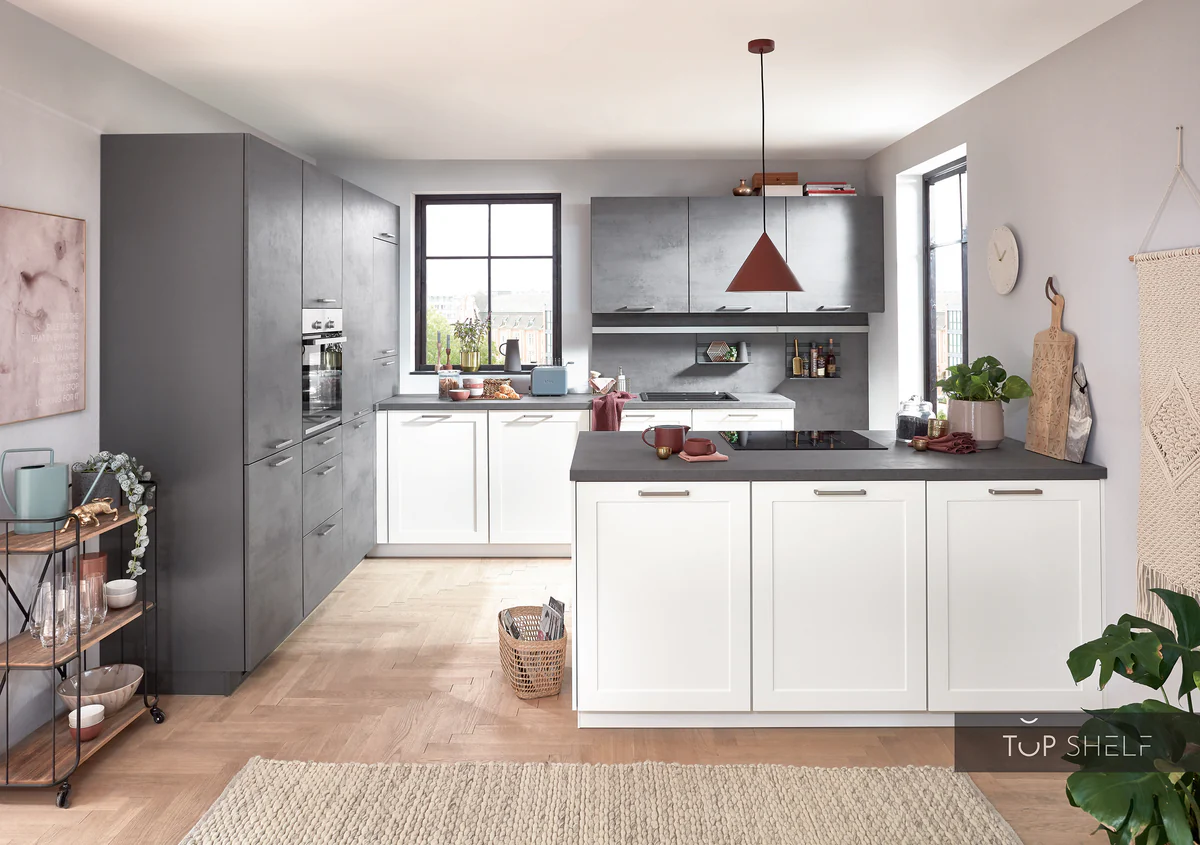
Smart Kitchen Technology: Revolutionizing Cooking and Convenience in 2025
1. The Power of Decor Accents: Setting the Mood & Style
Small touches create lasting impressions. Thoughtfully chosen decor accents breathe life into your dining room.
-
Centerpieces:
-
Fresh flowers or minimalist vases for natural elegance.
-
Sculptural candle holders or LED candles for ambiance without the fire risk.
-
Seasonal decor (pinecones, pumpkins, shells) for a rotating, fresh feel.
-
-
Artworks & Wall Decor:
-
Large statement pieces or curated gallery walls create focal points.
-
Mirrors amplify natural light and visually expand space.
-
Floating shelves to display collectibles, plants, or ceramics.
-
-
Textile Accents:
-
Cushions, throws, and table runners in complementary colors or patterns.
-
Eco-friendly, sustainably sourced fabrics increasingly popular in 2025.
-
2. Wall Treatments: Texture, Color & Character
Walls set the stage for style and atmosphere. Here are trending options in 2025:
| Wall Treatment | Description | Visual Impact | Durability | Cost Range (USD) | Maintenance |
|---|---|---|---|---|---|
| Paint | Matte, eggshell, or satin finishes | Versatile, budget-friendly | Moderate | $30-$100 per gallon | Easy, occasional touch-ups |
| Wallpaper | Textured, geometric, botanical prints | Statement & texture | Moderate to high | $50-$200 per roll | Medium, careful cleaning |
| Wainscoting & Paneling | Wood or MDF panels on lower walls | Classic, elegant | High | $300-$1500+ | Low to moderate |
| Wood Cladding | Reclaimed or engineered wood slats | Warm, rustic or modern | High | $500-$2500 | Moderate |
| Textured Plaster or Venetian | Tactile finishes adding depth | Luxurious, artisanal | High | $1000+ | Low |
-
Color Trends for 2025:
-
Earthy neutrals: warm taupe, clay, olive green
-
Deep moody hues: navy blue, charcoal gray, forest green
-
Soft pastels with warm undertones for subtle charm
-
3. Flooring: Foundation of Style & Comfort
The floor anchors the dining room design.
| Flooring Type | Style Impact | Durability | Cost (USD/sq ft) | Maintenance | Sustainability |
|---|---|---|---|---|---|
| Hardwood (oak, maple) | Timeless warmth | High | $6-$15 | Moderate (refinishing) | Moderate (depends on sourcing) |
| Engineered Wood | Similar look, better moisture resistance | High | $4-$12 | Low to moderate | Moderate |
| Luxury Vinyl Plank | Variety of looks, waterproof | Moderate to high | $2-$7 | Low | Lower (petroleum-based) |
| Natural Stone (marble, slate) | Elegant, cool feel | Very high | $7-$20 | High (sealing required) | High (natural material) |
| Cork Flooring | Soft, eco-friendly | Moderate | $3-$8 | Moderate | Very high (renewable) |
-
Use area rugs to add softness and define space—choose durable, stain-resistant fibers.
4. Window Treatments: Light & Privacy Control
Windows frame the dining room and regulate natural light.
-
Blinds & Shades:
-
Motorized roller shades with smart home integration.
-
Natural bamboo or woven wood shades for texture.
-
-
Curtains & Drapes:
-
Floor-length linen or velvet fabrics for elegance and sound absorption.
-
Layered treatments allow versatile light control.
-
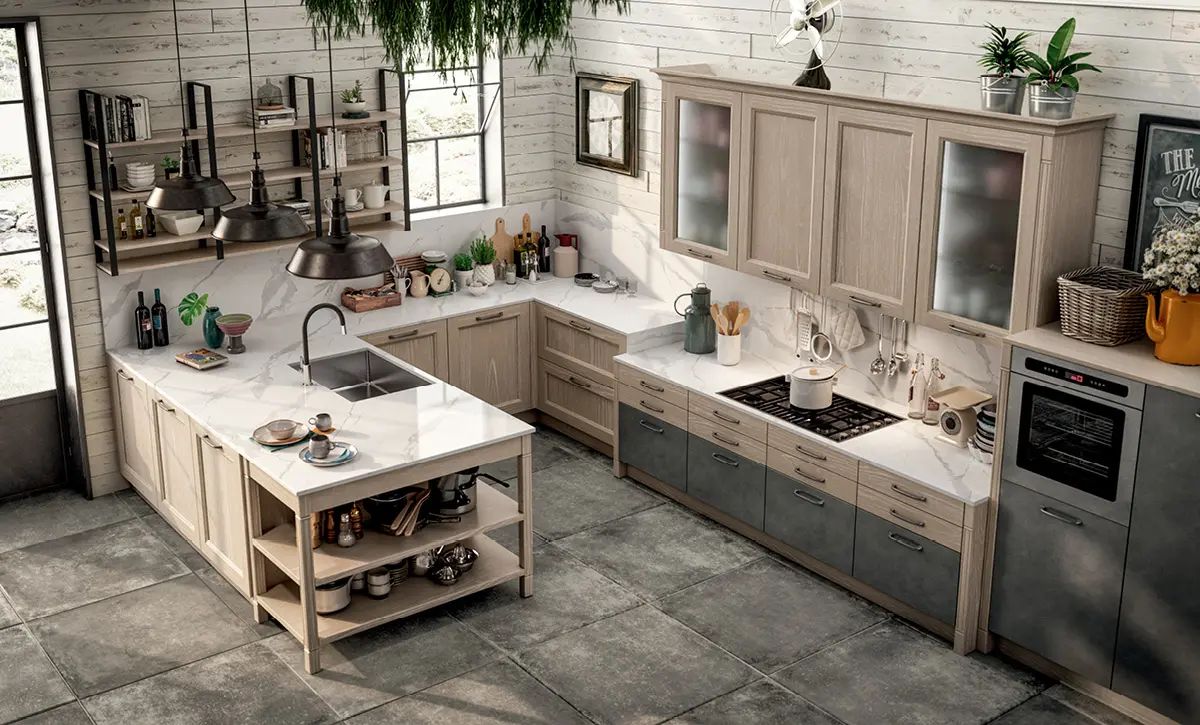
IMG_BLOG-STILE-AMERICANO kitchen lovers
5. Greenery & Biophilic Design
Plants and natural elements enhance mood and air quality.
-
Indoor Plants:
-
Tall plants like fiddle leaf figs or palms for dramatic impact.
-
Tabletop succulents or fresh herbs for freshness and aroma.
-
-
Sustainable Planters:
-
Made from recycled materials or biodegradable fibers.
-
6. Smart & Tech-Enabled Decor Touches
-
Smart Frames: Digital art frames that change artwork via Wi-Fi.
-
Voice-controlled lighting and window treatments.
-
Integrated speakers hidden in decor elements.
7. Comparative Table: Popular Dining Room Decor Materials in 2025
| Material | Visual Appeal | Cost Range (USD) | Durability | Sustainability | Maintenance |
|---|---|---|---|---|---|
| Natural Wood | Warm, classic | $200-$1500 | High | High (if certified) | Moderate |
| Metal (Brass, Steel) | Modern, sleek | $100-$800 | Very high | Moderate | Low |
| Glass | Transparent, light | $50-$600 | Moderate | Moderate | High (cleaning) |
| Ceramic/Porcelain | Artistic, textured | $50-$500 | High | High | Low |
| Fabric (Linen, Velvet) | Soft, tactile | $30-$300 | Moderate | High (natural) | Moderate |
| Recycled Materials | Eco-conscious | $50-$1000 | Variable | Very High | Variable |
8. Finishing Touches Checklist
-
Choose wall treatments aligned with your style and durability needs.
-
Select flooring that balances aesthetics, comfort, and maintenance.
-
Layer window treatments for light control and elegance.
-
Incorporate greenery for biophilic benefits.
-
Add smart decor for convenience and wow factor.
-
Coordinate colors and textures across all elements for cohesive style.
-
Use eco-friendly and sustainable materials whenever possible.
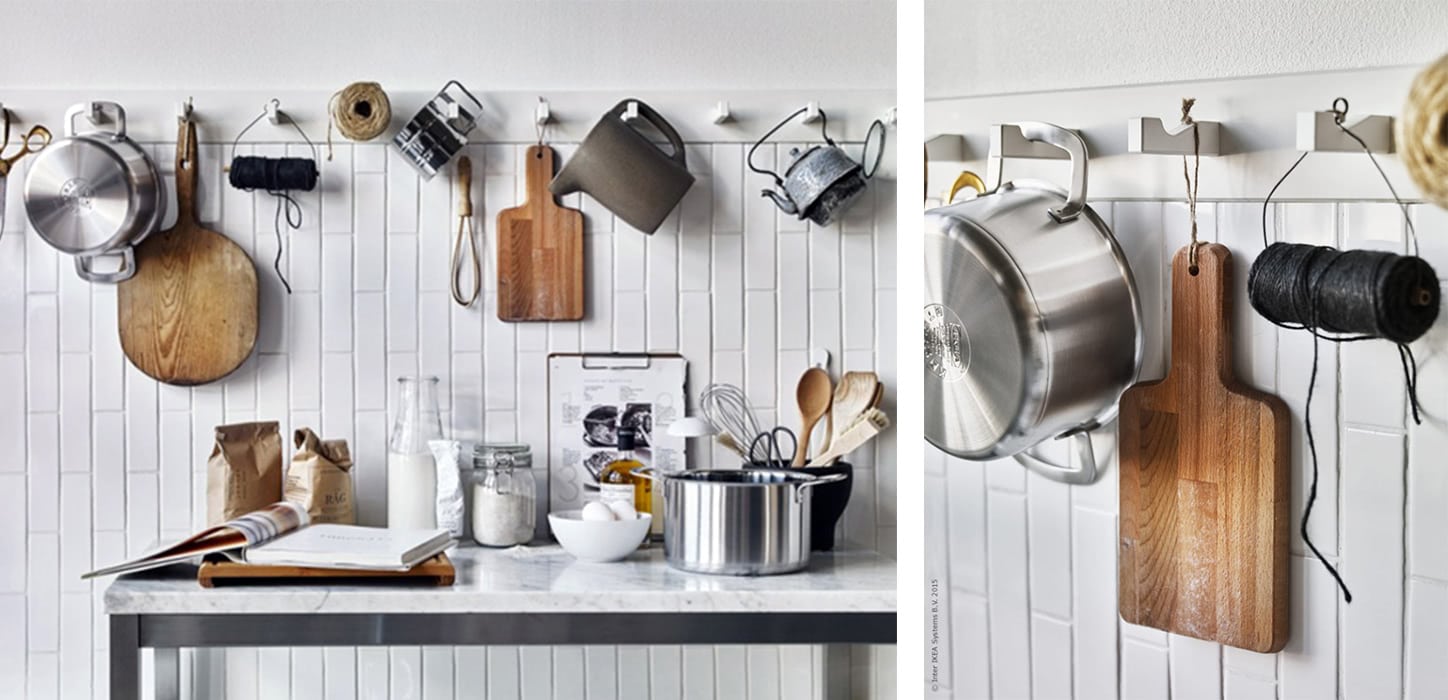
Essential Kitchen Tools: Must-Haves for Every Home Chef
Lighting, Acoustics, Ambiance & Cost Analysis — Making Every Dollar Count
1. The Vital Role of Lighting in Dining Rooms
Lighting sets the tone, mood, and functionality of your dining space. In 2025, lighting is smarter, more energy-efficient, and fully customizable.
Types of Lighting:
-
Ambient Lighting: Overall illumination; usually ceiling fixtures or recessed lights.
-
Task Lighting: Focused light on dining surfaces — pendant lamps or chandeliers.
-
Accent Lighting: Highlights art, plants, or architectural features — wall sconces or LED strips.
Trending Smart Lighting Features:
-
Dimmable and color temperature adjustable bulbs: Switch from bright white daylight to warm romantic glow with one tap.
-
Voice control and app integration: Compatible with Alexa, Google Home, or Apple HomeKit.
-
Energy-efficient LEDs: Save up to 80% energy compared to incandescent bulbs.
2. Acoustic Treatments for Comfortable Dining Conversations
Dining rooms often suffer from echo and noise, which hinder conversation and enjoyment.
-
Soft Furnishings: Rugs, upholstered chairs, and curtains absorb sound.
-
Acoustic Panels: Stylish panels or fabric-covered wall hangings that reduce reverberation.
-
Ceiling Clouds: Suspended panels that absorb sound from above.
3. Creating Ambiance: The Invisible Touch
Ambiance isn’t just lighting and sound; it’s the overall feel created by combining textures, scents, and spatial layout.
-
Scent Diffusers: Use subtle essential oil diffusers (e.g., lavender, citrus) to enhance mood.
-
Temperature Control: Smart thermostats keep the room comfortable year-round.
-
Seating Layout: Flexible seating arrangements encourage intimacy or socializing.
4. Cost Breakdown: Designing Your 2025 Dining Room Smartly
Here’s a detailed cost comparison table to help you plan your budget wisely.
| Component | Budget Option (USD) | Mid-Range Option (USD) | Premium Option (USD) | Notes |
|---|---|---|---|---|
| Lighting Fixtures | $100 – $300 | $300 – $1,200 | $1,200 – $4,000+ | Includes smart bulbs and installation |
| Smart Lighting Control | $50 – $150 | $150 – $400 | $400 – $1,000+ | Hub, app integration, voice control |
| Acoustic Treatments | $100 – $300 | $300 – $1,000 | $1,000 – $3,000+ | Panels, rugs, curtains, ceiling clouds |
| Window Treatments | $150 – $400 | $400 – $1,000 | $1,000 – $3,000+ | Blinds, curtains, motorized systems |
| Flooring | $2 – $6 / sq ft | $6 – $12 / sq ft | $12 – $25+ / sq ft | Vinyl, engineered wood, hardwood, stone |
| Wall Treatments | $30 – $100 / gallon paint | $50 – $200 / roll wallpaper | $500 – $1,500+ paneling | Paint, wallpaper, wainscoting |
| Furniture & Decor | $500 – $2,000 | $2,000 – $6,000 | $6,000 – $20,000+ | Table, chairs, centerpiece, accents |
| Total Estimated Cost | $1,200 – $3,500 | $4,000 – $10,000 | $10,000 – $35,000+ | Depending on room size and choices |
5. Budgeting Tips for Your Dining Room Project
-
Prioritize quality on key elements: Lighting and flooring deserve investment for longevity.
-
Layer your purchases: Buy furniture first, then upgrade lighting and decor later.
-
Go smart selectively: Smart bulbs in key fixtures rather than every light saves cost.
-
DIY paint or wallpaper installation can reduce labor costs.
-
Use rugs and curtains to absorb sound instead of expensive acoustic panels.

Essential Kitchen Tools: Must-Haves for Every Home Chef
6. Return on Investment (ROI) Considerations
-
High-quality lighting and flooring boost home resale value.
-
Smart features increase market appeal to tech-savvy buyers.
-
A welcoming ambiance enhances family lifestyle and social gatherings.
7. Comparative Table: Energy Use & Cost of Dining Room Lighting Options (Annual)
| Lighting Type | Avg Wattage per Fixture | Annual Energy Use (kWh) | Approx. Annual Cost (USD) | Lifespan (hours) | Eco Impact |
|---|---|---|---|---|---|
| Incandescent Bulbs | 60 W | 219 kWh | $26 | 1,000 | High |
| CFL Bulbs | 14 W | 51 kWh | $6 | 8,000 | Moderate |
| LED Bulbs | 9 W | 33 kWh | $4 | 25,000 | Low (Eco-Friendly) |
Assumes 4 bulbs used 3 hours/day, electricity cost $0.12/kWh
FAQ — Decor, Walls & Flooring
Q1: What’s the best wall color to make a small dining room feel bigger?
A1: Soft pastels or light neutrals with satin or eggshell finishes reflect more light and visually expand space.
Q2: Can I use wallpaper in a dining room prone to humidity?
A2: Yes, but choose vinyl or washable wallpapers designed for moisture resistance.
Q3: How do I protect hardwood floors in a dining room?
A3: Use rugs under the table and clean spills promptly. Regular refinishing every 7-10 years helps maintain them.
Q4: What plants thrive best in dining rooms?
A4: Low-light tolerant plants like snake plants, pothos, or ZZ plants are excellent choices.
Q5: Are motorized window treatments worth it?
A5: Yes, they offer convenience, energy savings, and increased home value.
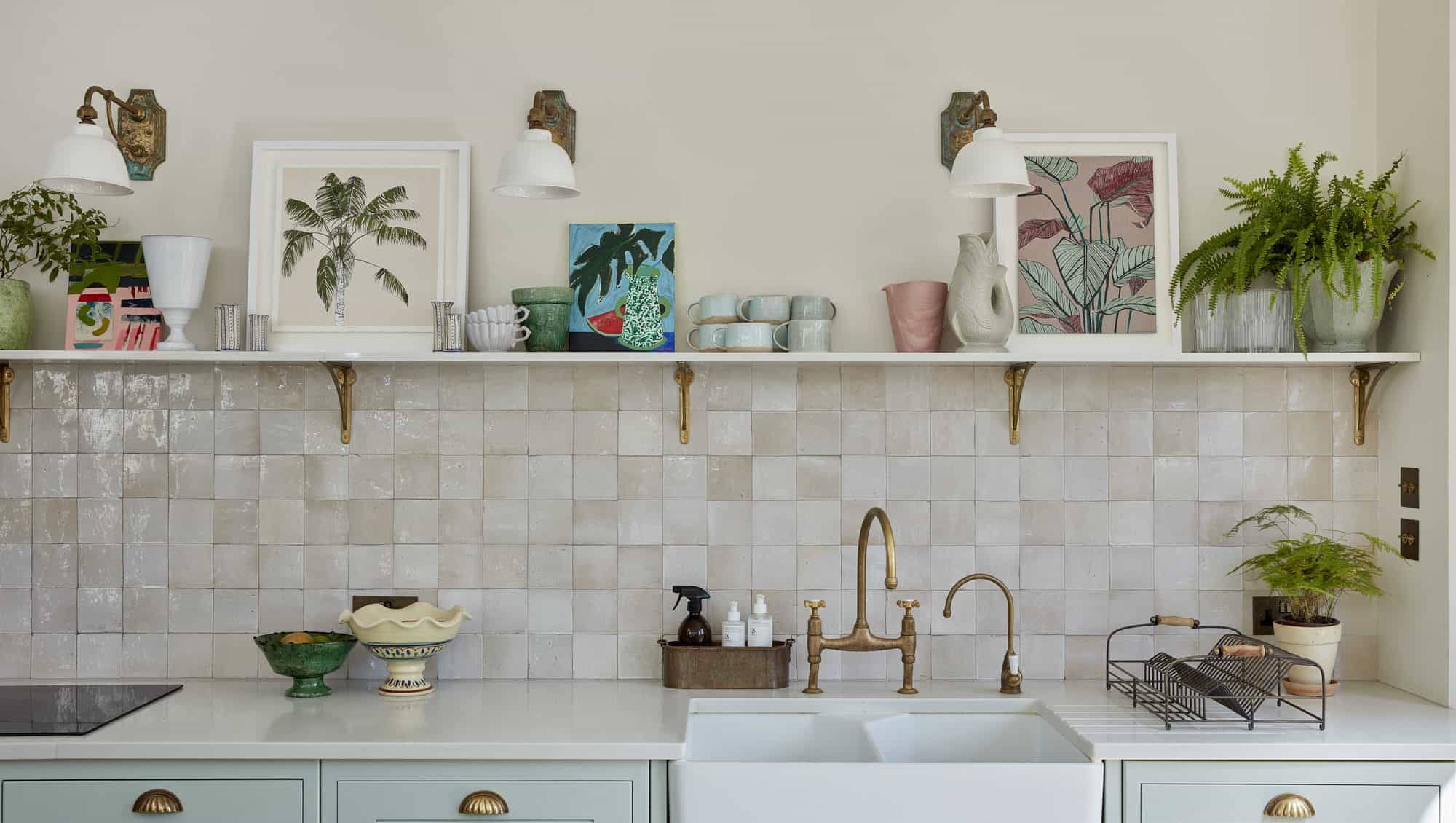
South-East-London kitchen and dining room
Future-Proofing Your Dining Room — Trends, Innovations & Timeless Tips for 2025 and Beyond
1. Embracing Smart Home Integration
-
The Rise of IoT Dining Spaces: Imagine your dining room communicating with your kitchen appliances, lighting, and climate control for seamless meal preparation and entertaining. Voice-activated dining room features, from lighting mood presets to automatic window shades, are becoming mainstream.
-
Multi-Function Smart Furniture: Tables with built-in charging stations, adjustable heights, and even integrated touchscreens will redefine dining convenience.
-
AI-Driven Ambiance: Future dining rooms will learn your preferences, adjusting lighting, sound, and temperature automatically based on time of day and occasion.
2. Sustainable and Eco-Friendly Design
-
Materials with a Conscience: Sustainable woods, recycled metals, and biodegradable fabrics will be top choices for furniture and decor.
-
Energy Harvesting Technologies: Expect lighting fixtures that harvest solar or kinetic energy to power themselves.
-
Zero-Waste Decor: Minimalist designs that emphasize quality and longevity over disposable trends.
3. Flexible and Adaptive Spaces
-
Transformable Rooms: Dining rooms that convert into home offices, study nooks, or entertainment hubs at the touch of a button.
-
Modular Furniture: Pieces that can be easily rearranged, expanded, or contracted to accommodate guests or different uses.
-
Hybrid Indoor-Outdoor Designs: Sliding glass walls and retractable roofs bring the outdoors in and expand usable space.
4. Health & Wellness Integration
-
Air Quality Monitoring: Smart sensors will continuously monitor and adjust air quality to ensure a fresh dining atmosphere.
-
Biophilic Design: Incorporating plants, natural light, and nature-inspired textures to reduce stress and enhance well-being.
-
Ergonomic Seating: Future dining chairs will prioritize comfort and posture, possibly using memory foam and adjustable support.
5. Timeless Tips to Keep Your Dining Room Future-Ready
-
Invest in Neutral, High-Quality Basics: Classic colors and durable materials remain stylish and avoid frequent renovations.
-
Keep Tech Upgradable: Choose systems and devices that allow easy software updates or component swaps.
-
Balance Trends with Personal Style: Incorporate trendy accents rather than permanent fixtures, so you can refresh without full remodels.
-
Plan for Versatility: Design for multiple uses and changing needs — from casual family dinners to formal entertaining.
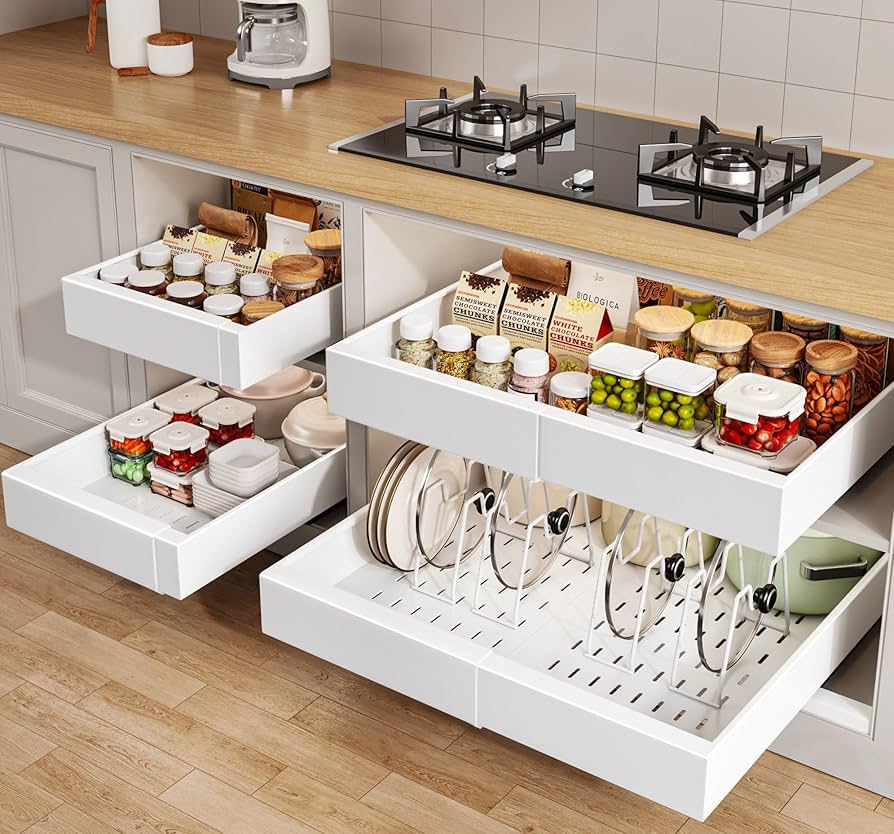
20 kitchen tools and equipment
6. Anticipated Innovations on the Horizon
| Innovation | Description | Expected Availability | Potential Impact |
|---|---|---|---|
| Holographic Dining Displays | Virtual table settings and art projections | 2027+ | Personalized dining aesthetics |
| Self-Cleaning Surfaces | Nanotech coatings that repel spills and stains | 2026 | Reduced maintenance time |
| Augmented Reality Menus | Interactive dining experiences with AR-enhanced food info | 2025 | Engaging, educational dining |
| Voice-Controlled Table Adjustments | Tables adjusting height and shape via voice command | 2025 | Enhanced comfort and accessibility |
7. Final Words from Your Trusty Guide
Master Metin, your dining room is more than just a place to eat — it’s where memories are made, conversations bloom, and style meets soul. Designing smartly today means welcoming a future filled with comfort, innovation, and timeless beauty.
May your dining space always welcome & wow, now and forever.
Smart & Stylish Dining Rooms for 2025: How to Design a Space that Welcomes & Wows
Contents:
Part 1: Introduction — Why Your Dining Room Matters in 2025
Part 2: Planning & Layout — Foundations for Function & Style
Part 3: Furniture & Materials — Choosing the Perfect Pieces
Part 4: Color Schemes & Decor — Setting the Mood & Personality
Part 5: Technology & Smart Features — Enhancing Convenience & Comfort
Part 6: Lighting, Acoustics, Ambiance & Costs — Making Every Dollar Count
Part 7: Future-Proofing Your Dining Room — Trends, Innovations & Timeless Tips
Polished Conclusion:
Your dining room is the heart of your home’s hospitality — a place where loved ones gather, memories are shared, and style speaks volumes. Designing it smartly for 2025 means combining timeless elegance with cutting-edge innovation.
From choosing multifunctional furniture and energy-efficient lighting to integrating smart home features and embracing sustainable materials, every decision contributes to a space that truly welcomes and wows.
Stay flexible, prioritize quality, and future-proof your design with adaptability and technology. By doing so, your dining room will not only be stunning today but will continue to delight for years to come.
Suggested Next Steps:
-
Add a FAQ section answering common dining room design questions.
-
Insert authoritative backlinks to trusted home design resources and smart home technology sites.
-
Embed a curated YouTube video showcasing 2025 dining room trends and smart features.
-
Create downloadable checklists and budgeting tables for readers to plan their own projects.
-
Offer seasonal updates and ongoing trend reports as blog follow-ups.
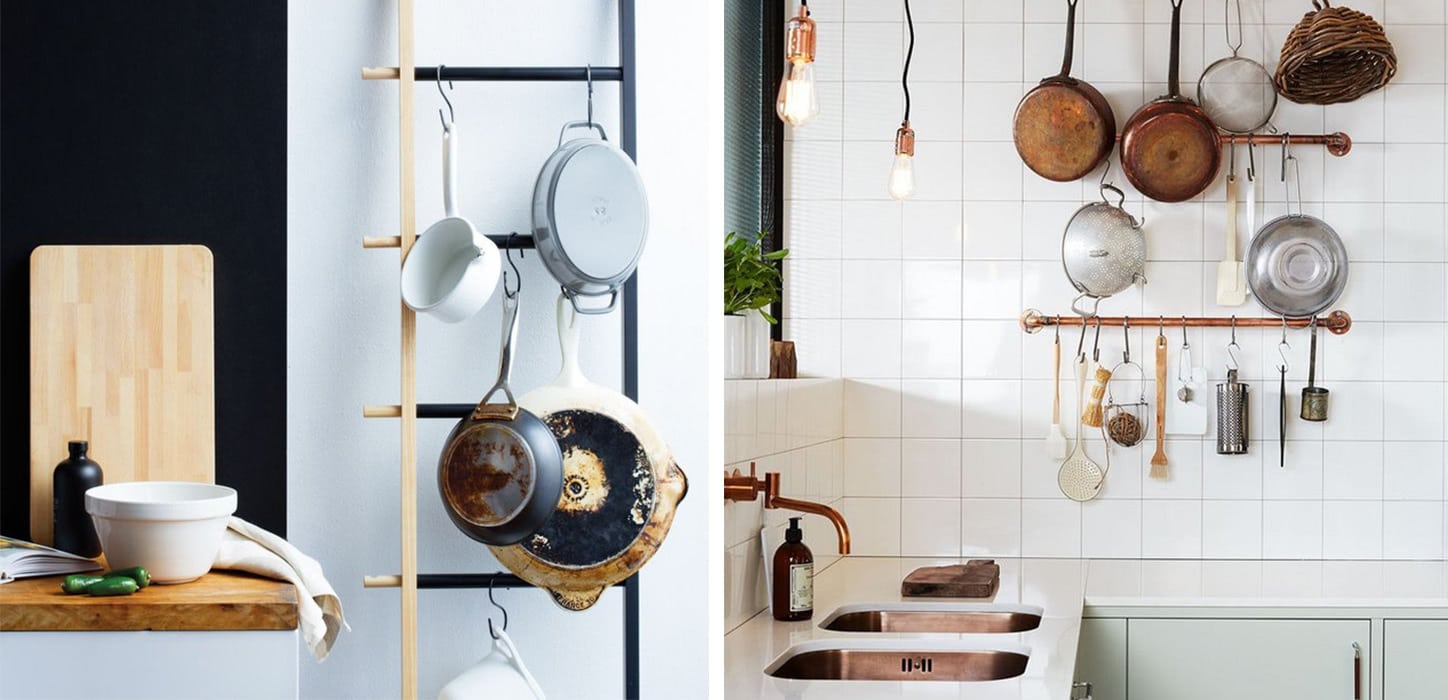
Kitchen-Accessories-Introduction-Fitzgerald-Kitchens
FAQ — Furniture and Layout
Q1: How much clearance should I leave around my dining table?
A1: Aim for at least 36 inches on all sides to allow for comfortable movement.
Q2: Can I mix different chair styles?
A2: Yes! Mixing styles adds personality but keep colors or materials cohesive for balance.
Q3: What’s the best table shape for a small dining room?
A3: Round or oval tables maximize space and encourage conversation in compact areas.
Q4: How can I make my dining furniture more sustainable?
A4: Choose reclaimed or FSC-certified wood, natural fabrics, and buy from local artisans when possible.
Q5: Are smart furniture options worth the investment?
A5: They add convenience and can increase property value, but choose features that suit your lifestyle.
FAQ — Dining Room Design Trends
Q1: How can I incorporate sustainable materials without sacrificing style?
A1: Choose high-quality reclaimed or renewable materials with appealing textures and finishes. Pair them with modern design for a balanced look.
Q2: Are multifunctional dining rooms suitable for small spaces?
A2: Absolutely. Use extendable tables, stackable chairs, and smart storage to maximize flexibility.
Q3: How do I mix textures effectively?
A3: Balance soft and hard, matte and shiny surfaces. Keep colors cohesive to unify the variety.
Q4: What lighting style works best with curved furniture?
A4: Soft, diffused lighting complements curves well. Avoid harsh, direct lights.
Q5: How do I add personal touches without cluttering?
A5: Limit décor to a few meaningful pieces, displayed with intention, and maintain plenty of open space.
FAQ — Smart Dining Rooms
Q1: Are smart dining room devices expensive to install?
A1: Costs vary; starting with smart bulbs and thermostats is affordable. Advanced tables and automation add to the budget but deliver significant convenience and long-term savings.
Q2: Can I control smart dining devices from my phone?
A2: Yes, most devices come with apps allowing control from anywhere.
Q3: Will smart devices work if my internet goes down?
A3: Some features may be limited; many devices have local controls, but internet-dependent functions require connectivity.
Q4: Is it difficult to integrate smart tech with existing décor?
A4: With careful selection and professional help, devices can be subtle and complement your style.
Q5: Do smart devices consume a lot of electricity?
A5: Most smart home devices are energy-efficient and often help reduce overall consumption.
Summary & Key Takeaways
-
Multifunctional dining rooms reflect evolving lifestyles.
-
Sustainability and biophilic design dominate material choices.
-
Statement lighting and curved furniture define aesthetics.
-
Warm muted palettes and mixed textures enrich ambiance.
-
Minimalist storage keeps spaces functional and neat.
-
Vintage and personalized décor add character and warmth.

Senior couple baking together in kitchen


